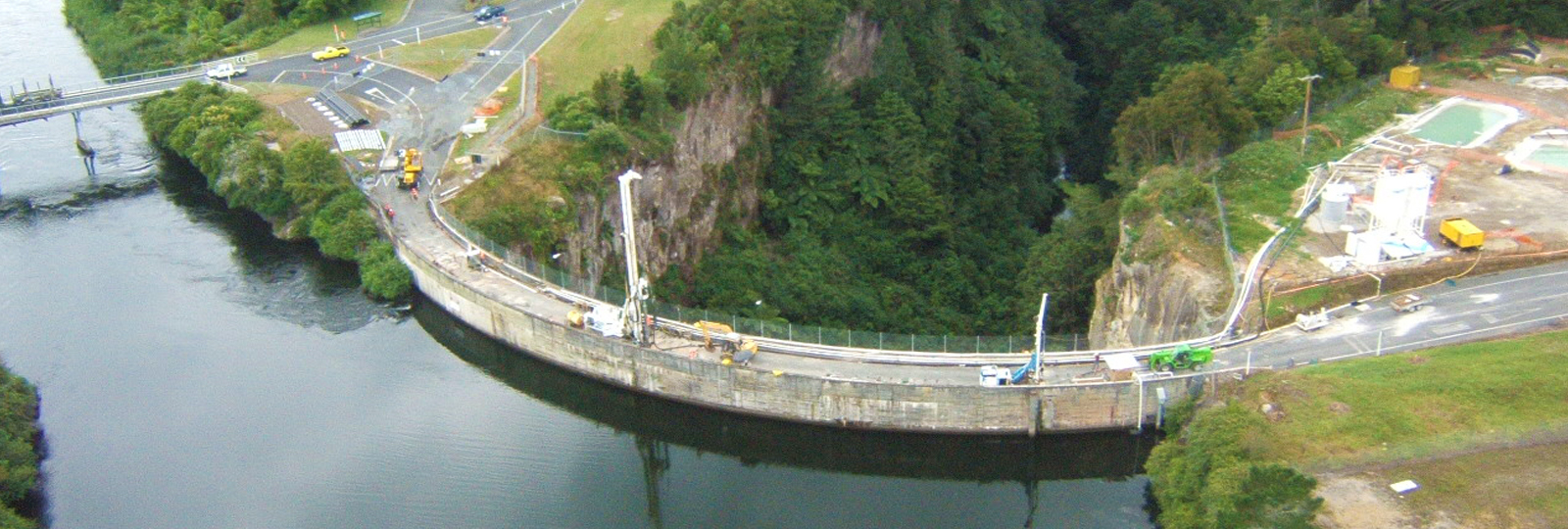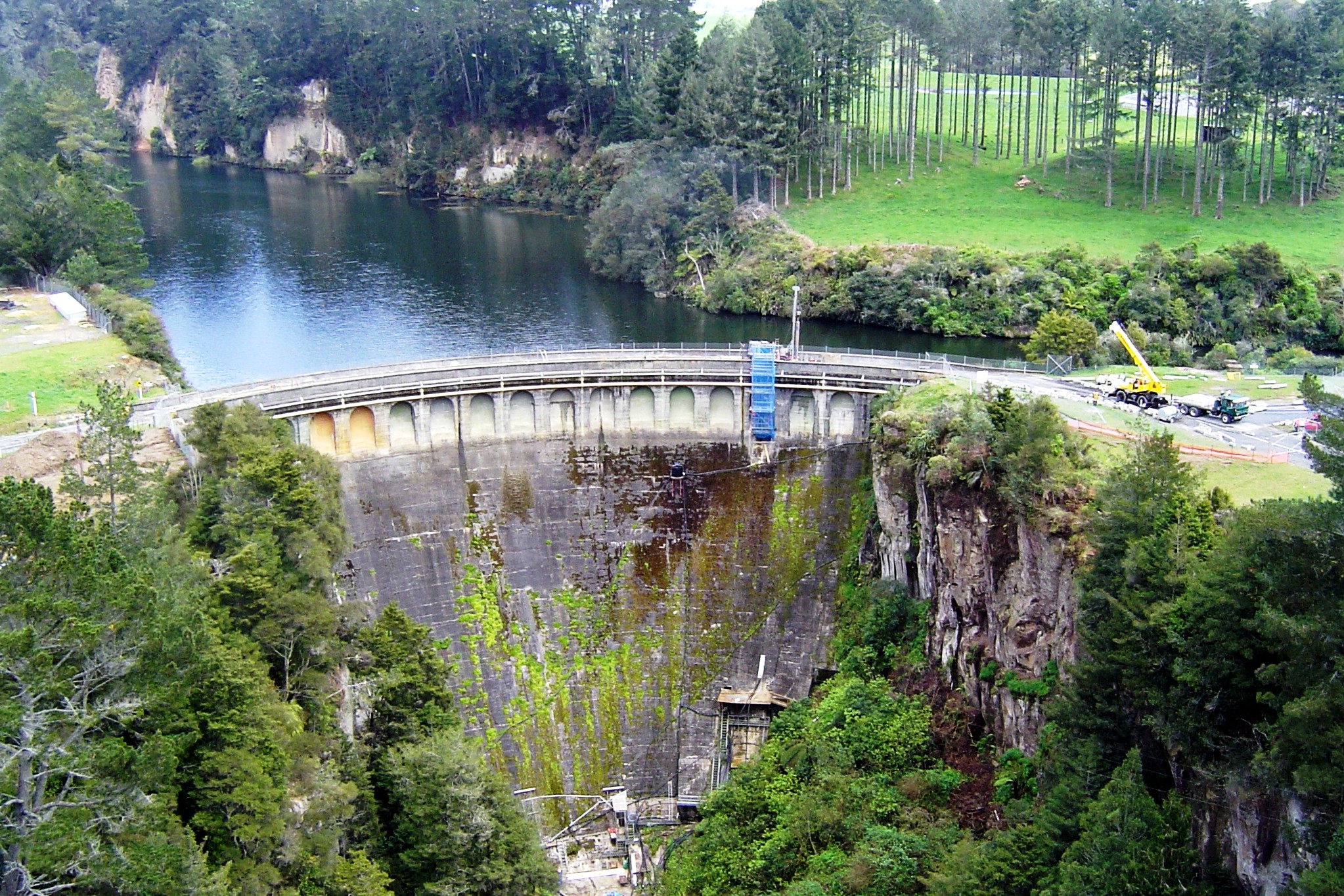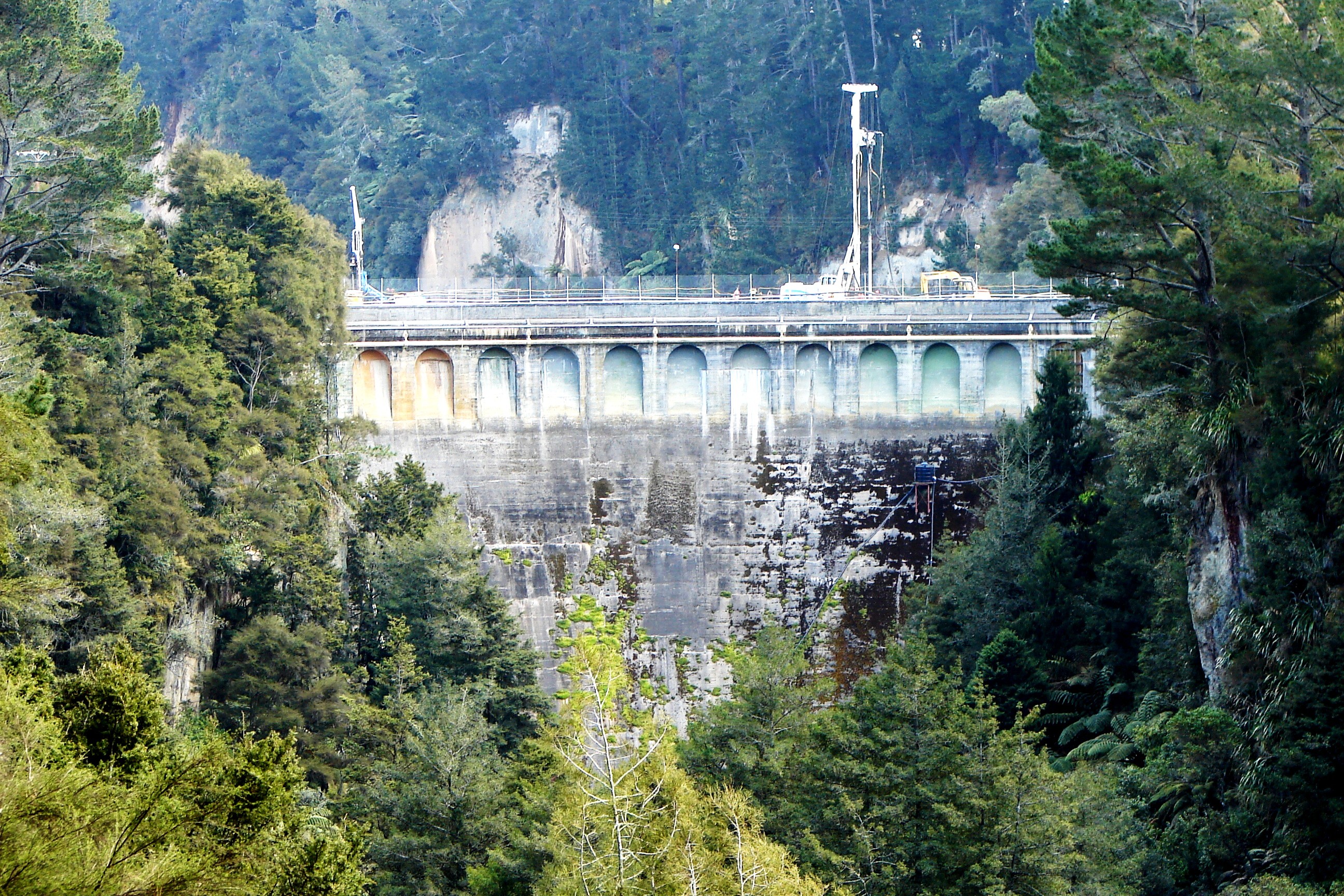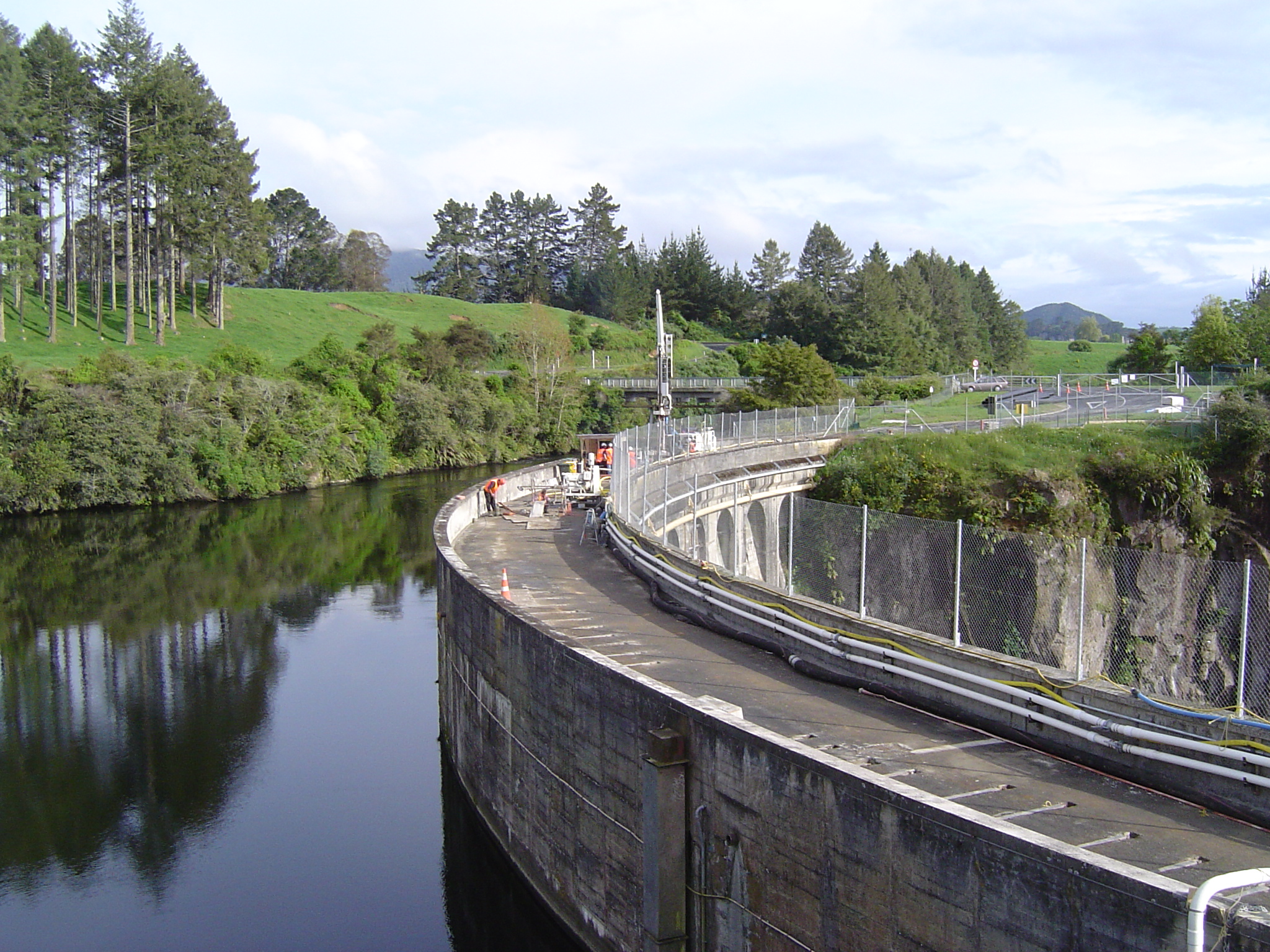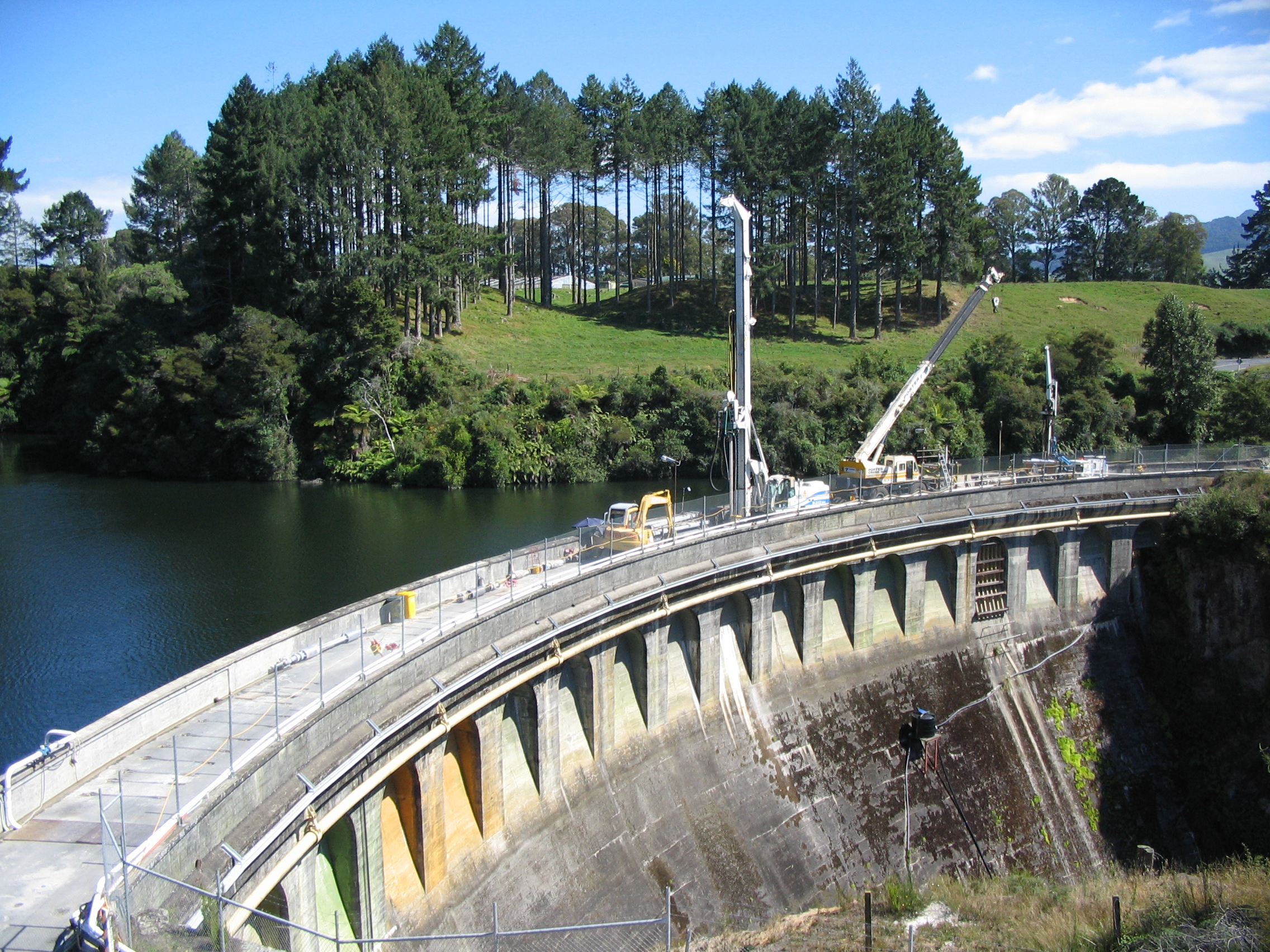Waikato - New Zealand
In 2007 Trevi completed the construction of a 90 m deep secant pile cut-off wall to intersect fissures in the rock; striving to push the envelope to improve existing technologies. The owner and operator, Mighty River Power, had been planning this project for several years with the technical assistance of Dam Watch Services. To achieve the robust and verifiable solution required, they recognized that the development and application of unproven technology would be necessary.
Mighty River Power chose to adopt a formal Alliance procurement model and, after a series of interviews with few International Foundation Engineering Contractors, they chose the Italian Foundation Specialist Trevi S.p.A. and the local specialist civil engineering contractor Brian Perry Civil as their alliance partners to deliver the NZ$20m project.
After two years of work, early monitoring indicated that the cut-off was extremely effective.
Ground Conditions
The dam site is located in an area characterized by the presence of multiple ignimbrite flows deriving from volcanic eruptions over the last 2 million years.
Two ignimbrite units form the gorge walls. The younger Mananui Ignimbrite is present, as upper unit, on the right abutment only, while Ahuroa Ignimbrite is present on both abutments. Both ignimbrites are columnar jointed, weak to moderately strong point-welded tuff. The main dam footprint is founded on a 40-50 m thick layer of Ongatiti Ignimbrite, a point-welded tuff. The upper part of the unit is very weak, with unconfined compressive strength between 2 and 6 MPa, while below the original dam’s cut-off wall the Ongatiti is considerably stronger (up to 28 MPa) and it is identified as the “hard zone”. A feature of this ignimbrite layer is the lack of regular orthogonal vertical jointing, which is often seen in ignimbrites in New Zealand. Three major sub-vertical cracks or fractures were detected during dam construction: they diagonally cross the dam footprint in an East-West direction.
A fourth set of fractures was identified in 2003 during the recent foundation investigations. These fractures extend along the full depth of Ongatiti and their width ranges from nihil up to 80 mm. The fractures relate to ignimbrite cooling after emplacement and are not caused by tectonic phenomena. Clay infill is generally present where the fracture opened at the time of emplacement. The fracture infill is Nontronite, an iron-rich smectite clay with a very high moisture content and very low shear strength.
Beneath the Ongatiti Ignimbrite, about 40 m below the base of the concrete dam, older ignimbrite deposits - identified as Pre-Ongatiti for this project - are encountered.
| Owner | Mighty River Power |
| Main Contractor | Alliance Trevi - Brian Perry Civil Eng. - Mighy River Power |
| Duration of works | 2005 - 2007 |
Background
Arapuni Dam is a 64 m high curved concrete gravity dam, with crest length of 94 m, across the Waikato River bed. The dam, commissioned in 1929, forms the reservoir for a 186 MW hydroelectric power station.
The key original features of the dam include concrete cut-off walls and a network of porous (no-fines) concrete under drains at the dam/ foundation interface. The under drain is the main uplift control at the dam/foundation interface. The original cut off walls extend to a depth of 65 m below the dam crest and also into the left and right abutments of the dam. No grout curtain was constructed during the original construction.
In June 1930 the reservoir was completely dewatered, due to the development of a large crack in the headrace channel near the powerhouse, whilst this was being repaired; a grout curtain was constructed along the upstream heel of the dam and along the front of both abutment cut-off walls. This grout curtain was constructed just upstream of the dam and cut-off walls, using a single row of grout holes at 3 m centres, but it was not physically connected to the dam. At the steep gorge walls a bitumen plug was constructed and the grout curtain extended radially from the crest abutments.
There has been a history of periodic seepages, through fissures within the Ignimbrite, since the reservoir has been refilled in 1932. Observed flow rates of up to 750 litres per minute have been managed using targeted grouting works.
In 2000 a trend of increasing pressure and flow was identified and solid particles of clay and bitumen, together with lake life, were observed exiting the drainage system. Investigations by Dam Watch showed that the very weak Nontronite clay infill was eroded from within a fracture forming a ‘pipe’ connecting the reservoir and the dam drainage system; this was successfully grouted in 2002.




